Training an AI model has never been easier. With open-source frameworks, pre-trained models, and cloud APIs, even small teams can spin up experiments in hours. But making AI perform, scale, and stay compliant in production? That’s where most enterprises stumble.
The Infrastructure Gap Behind AI Failures
The reality is sobering: many AI initiatives don’t fail because of bad algorithms – they fail because the infrastructure isn’t designed to support them. An estimated 80%+ of AI projects fail and RAND research points to infrastructure gaps as a major cause.
From compute shortfalls to compliance lapses, companies face hidden pitfalls that turn promising pilots into stalled projects or runaway cost centers.
The good news: these challenges aren’t insurmountable.
By aligning infrastructure with the unique demands of AI workloads, organizations can turn experiments into enterprise-scale impact.
Let’s see how the right foundation can help you avoid them.
1. Compute Crunch: CPUs Can’t Keep Up
AI training is unlike traditional workloads. Deep learning requires billions of parallel matrix operations — something CPUs weren’t built for.
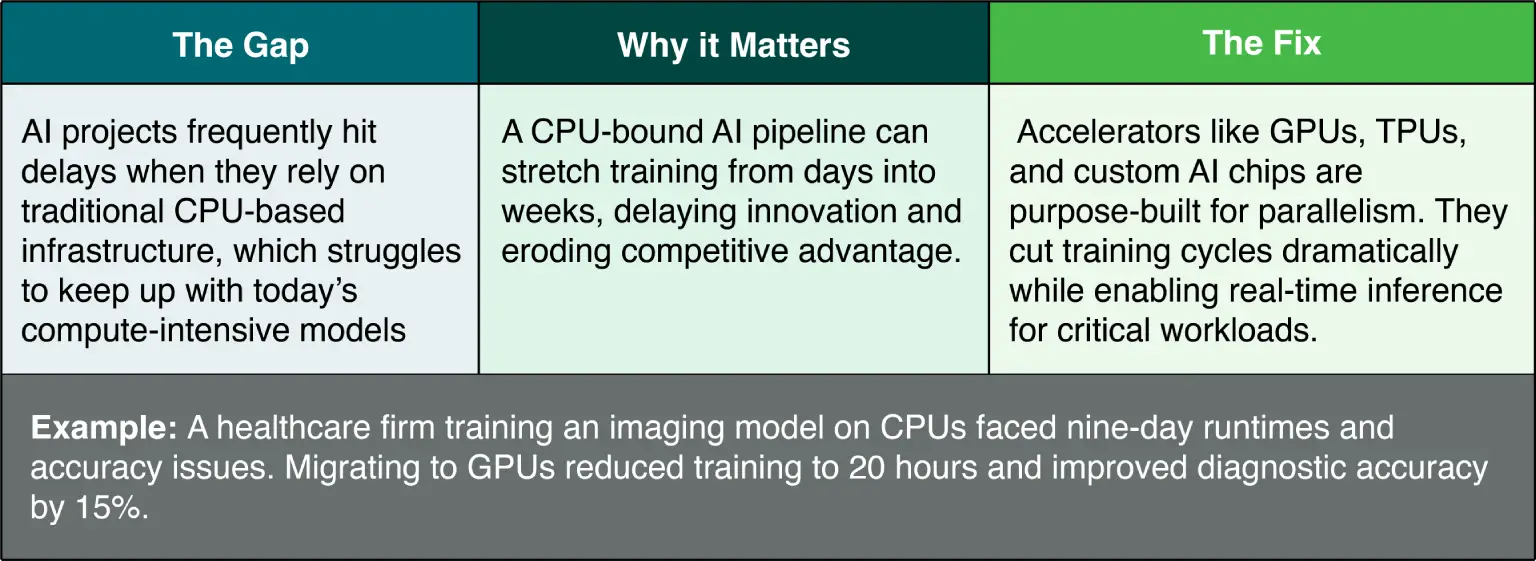
2. Data Bottlenecks: Storage and Bandwidth Mismatch
AI isn’t just compute-hungry — it’s data-hungry. Even the best GPUs grind to a halt if storage can’t keep up.
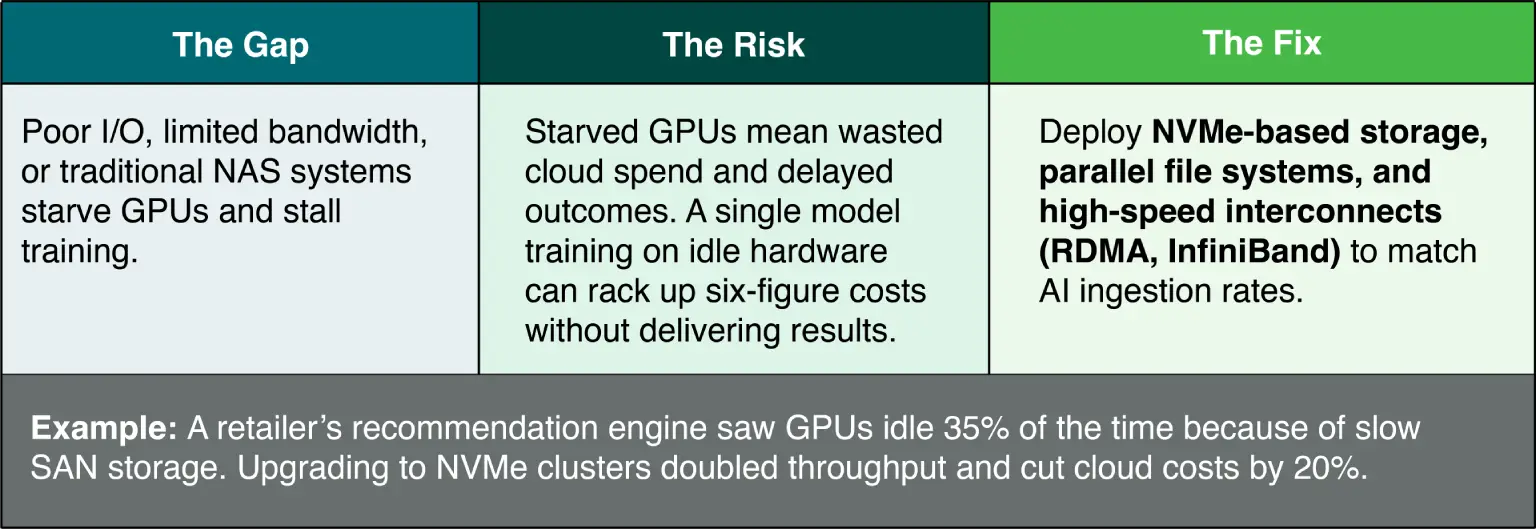
3. Orchestration & Automation: The MLOps Blind Spot
Building a model is only one step. Managing training, testing, retraining, and deployment cycles requires orchestration. Without it, costs spiral and reproducibility disappears.
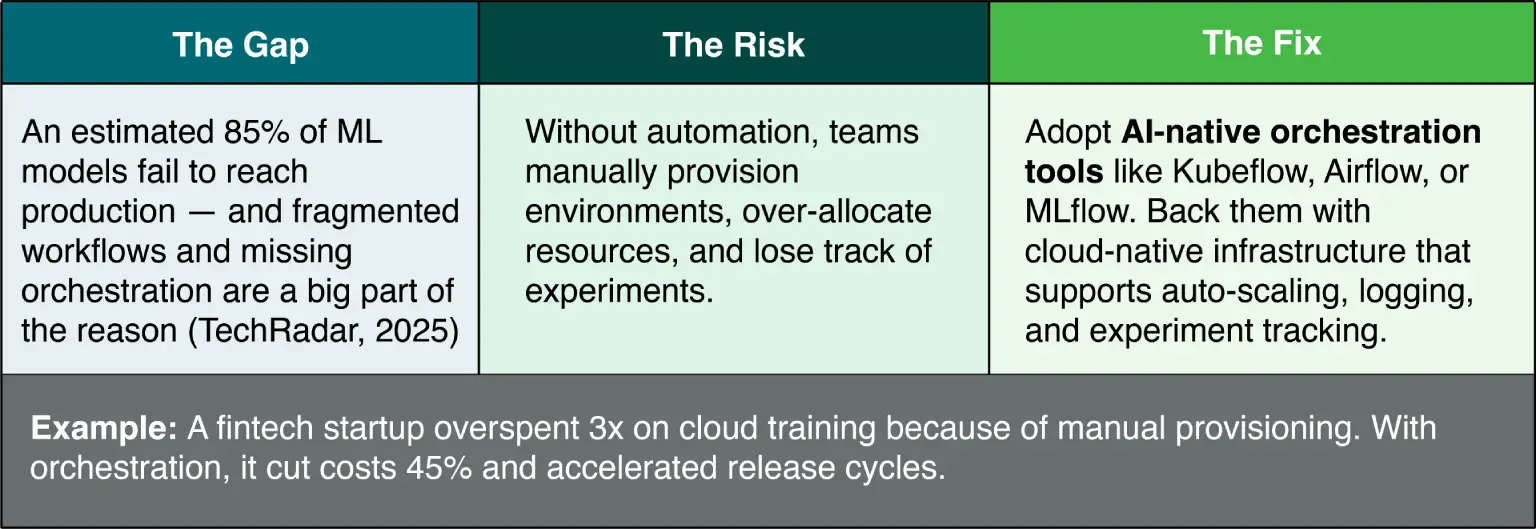
4. Scalability & Flexibility: Static Infrastructure Fails
AI models are scaling exponentially. GPT-2 had 1.5 billion parameters; GPT-4 is rumored to exceed 1 trillion. Static infrastructure can’t keep pace.
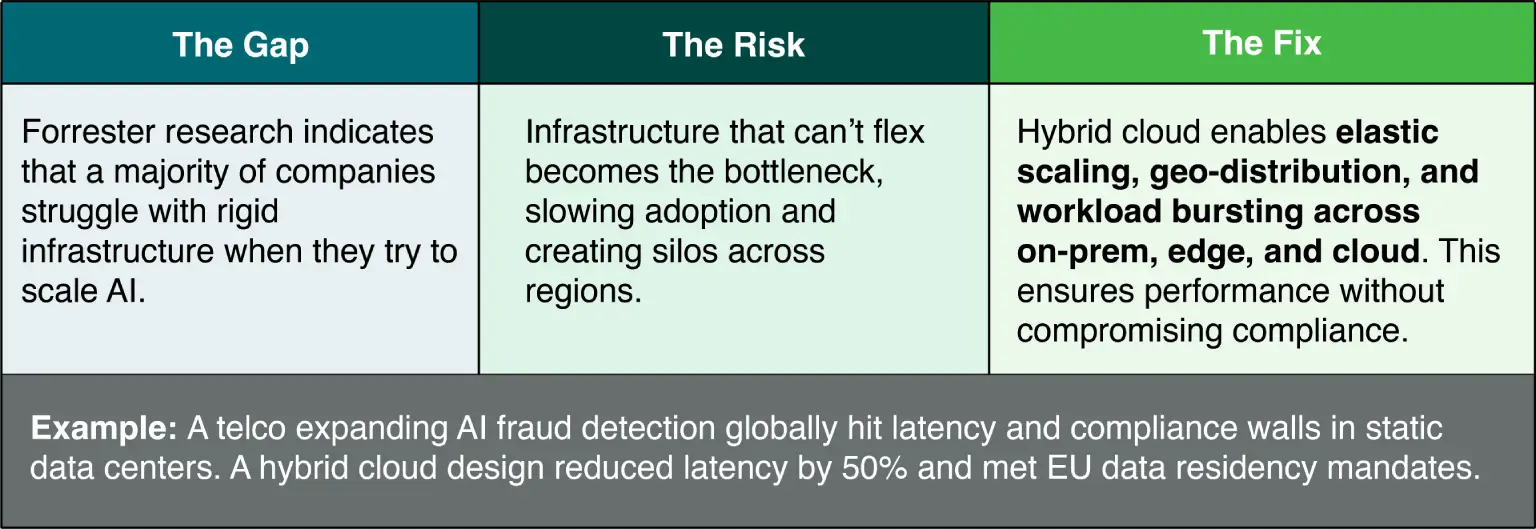
5. Security & Compliance: Hidden Risks
AI workloads often process sensitive data — PII, PHI, financial transactions. Without built-in governance, exposure is inevitable.
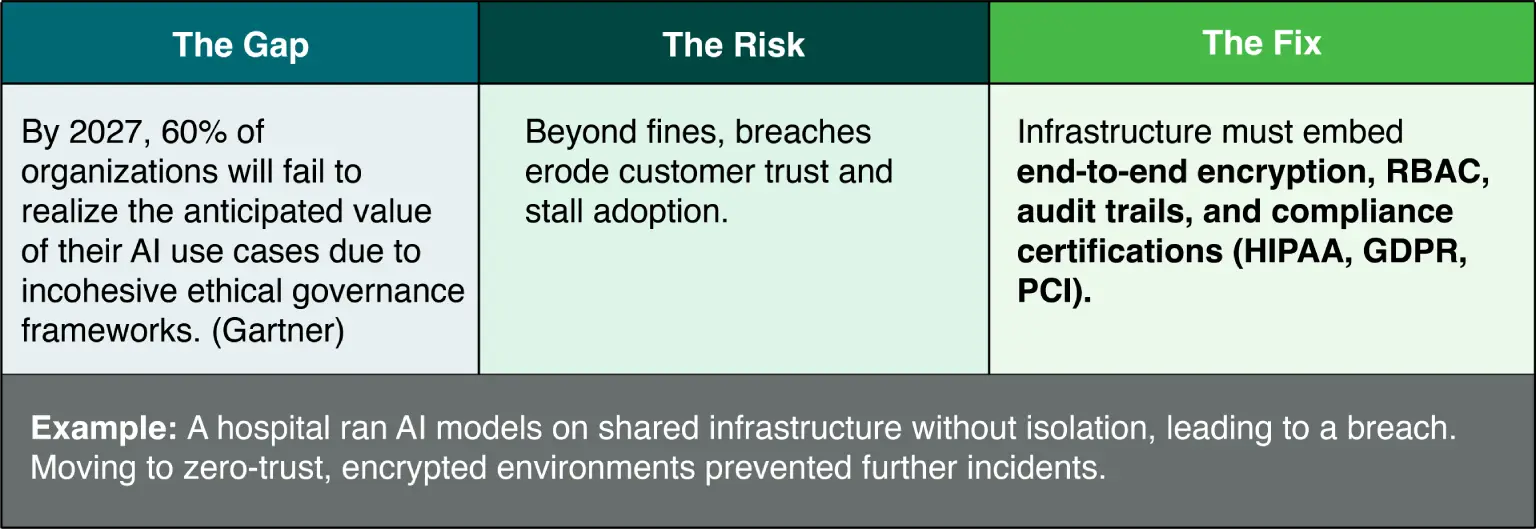
6. Skills Gap: Why Infrastructure Expertise Matters
Buying GPUs is easy. Using them effectively is not. Many enterprises fail because they lack infrastructure expertise.
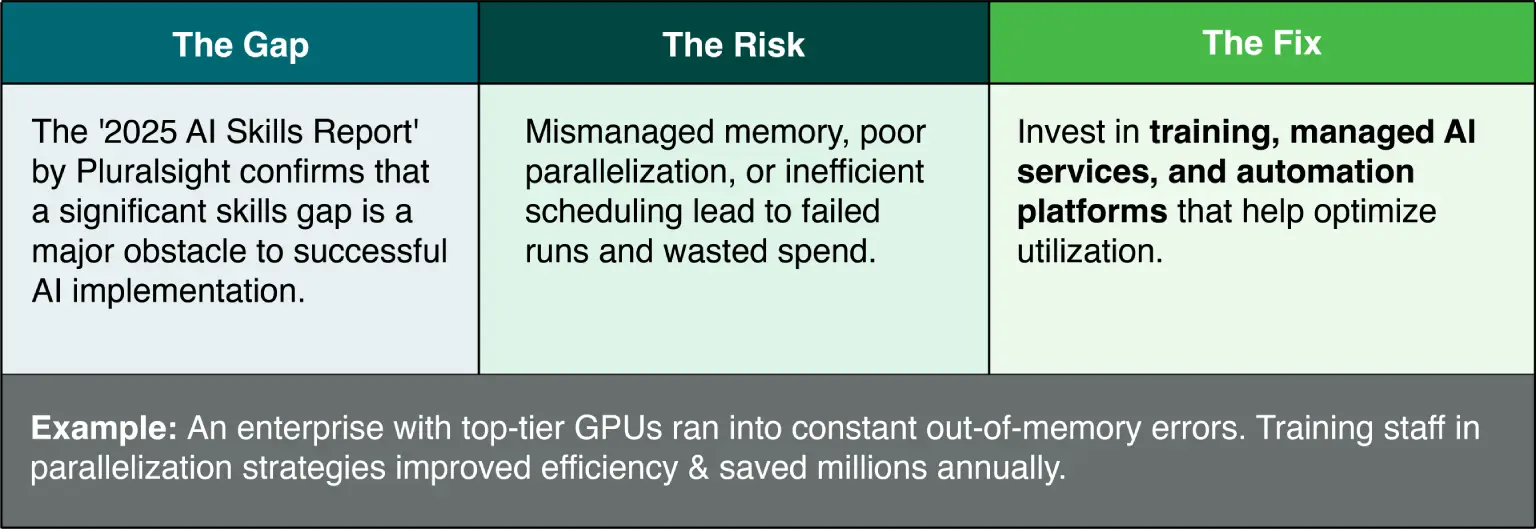
7. Hybrid Cloud: The Future of AI Infrastructure
No single environment can handle all AI workloads. Hybrid clouds have emerged as the model of choice.

Conclusion: Infrastructure Is the Foundation of AI Success
AI is no longer experimental — it’s powering diagnostics, personalization, automation, and decision-making. But models are only as strong as the infrastructure beneath them.
Leaders must ask:
- Are CPUs still slowing down training?
- Are GPUs waiting on data?
- Is orchestration automated or manual?
- Can your infrastructure scale across regions?
- Are compliance and security built-in?
- Do your teams have the skills to fully utilize what they’ve invested in?
The smartest models in the world can’t perform without the right foundation. The wrong infrastructure blocks innovation. The right one accelerates it — turning pilots into production, & experiments into enterprise impact.
Want to assess your AI readiness? Start with an infrastructure audit or optimization workshop with CtrlS.

Manzar Saiyed, Vice President - Service Delivery, CtrlS Datacenters
With over 15 years of rich experience in project and program management, Manzar has been instrumental in planning and executing mid to large size complex initiatives across different technologies and geographies. At CtrlS, he is responsible for solutioning and bidding for large system integration projects across emerging markets.

